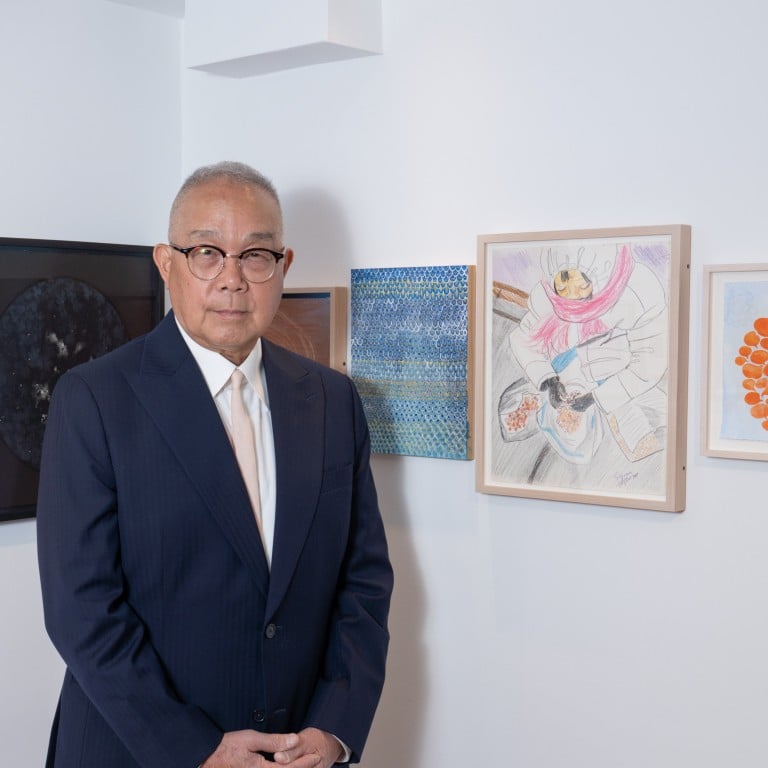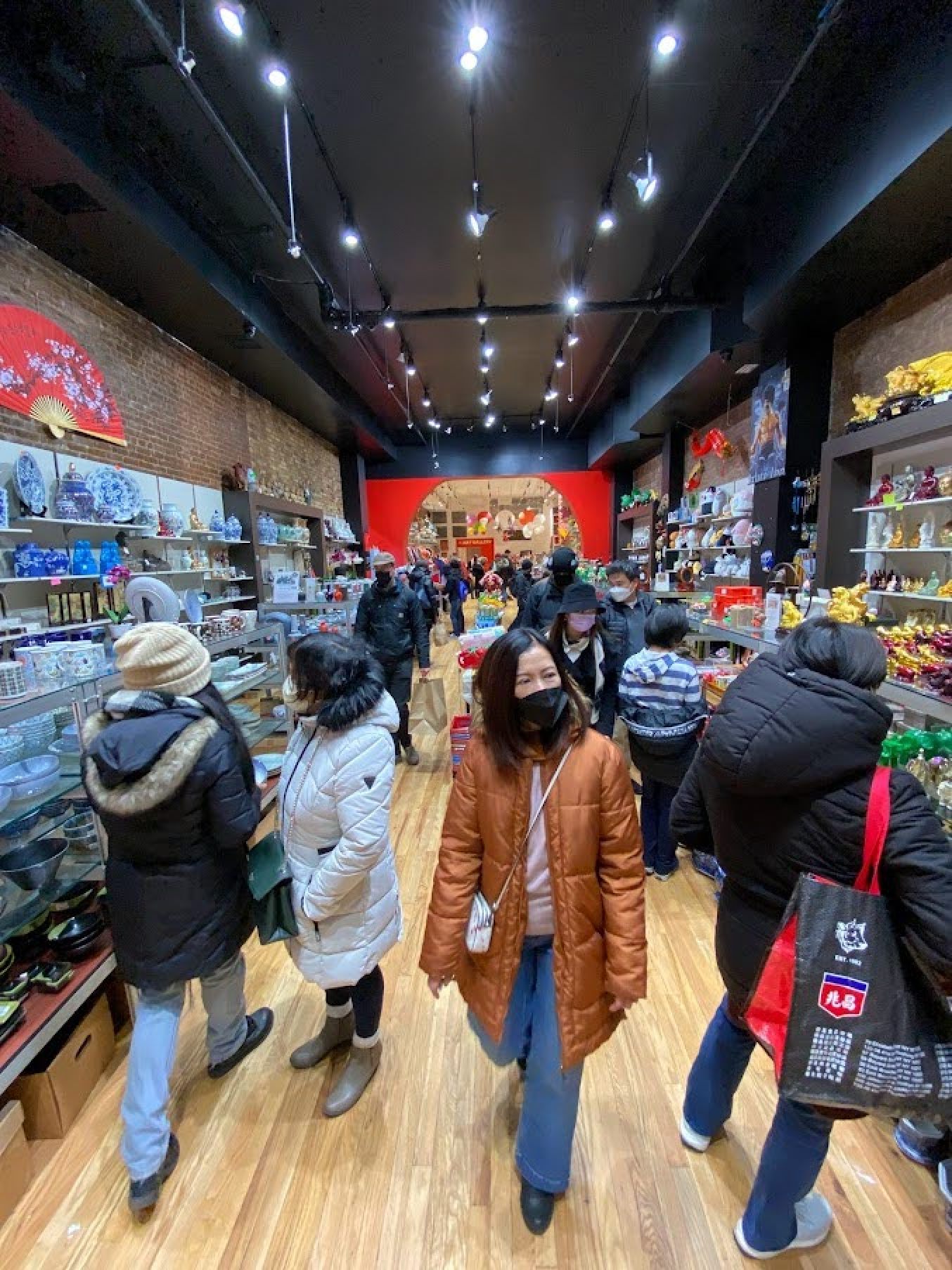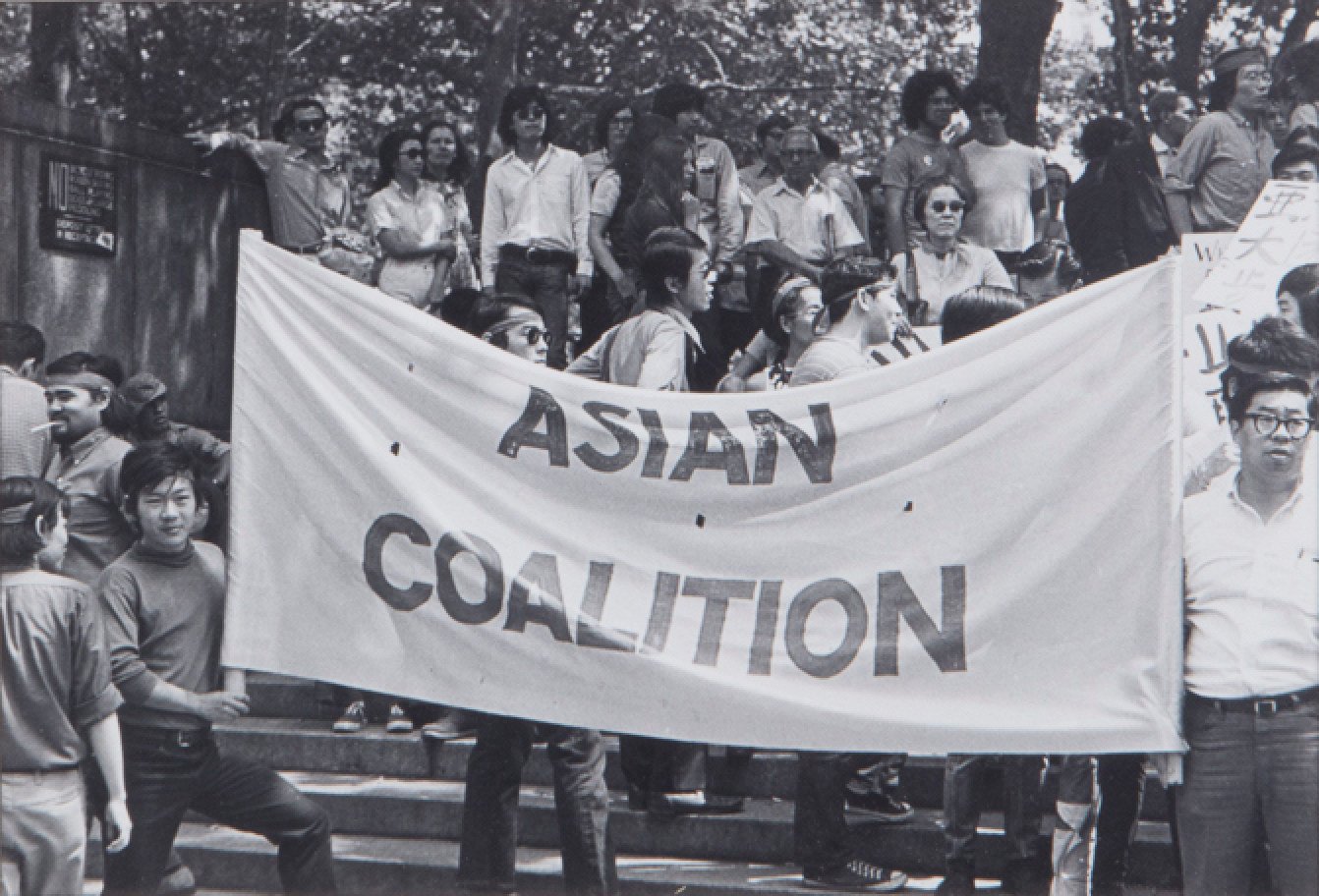
50 years of Asian-American art, community and protest celebrated in archive exhibition by New York artist and activist Arlan Huang
- The show at New York’s famous ‘friendship store’ Pearl River Mart is curated from the archives of Arlan Huang, who arrived in the city in the early 1970s
- Huang became involved in anti-war protests and joined the Basement Workshop, an arts and grass-roots community centre in Chinatown
In the early 1970s, Arlan Huang moved to New York from San Francisco, where he had been inspired by the ideals of the burgeoning hippy movement.
The art student quickly immersed himself in the local Chinatown cultural scene during those heady days of political awakening and, half a century later, remains an integral part of New York’s Asian-American community.
A large selection from his personal archive is on view until August 27 at Pearl River Mart – a well-loved Asian emporium in New York – and the exhibition tells a fascinating story of how an inclusive and diverse community can build up around the increasingly schismatic concept of race.
Huang, now 75, says he arrived in New York at the dawn of the Asian-American movement, noting that the term “Asian-American” only came into existence in 1968 to replace the widely used label “Orientals”.

“There was a political awakening in the US which started with the civil rights movement, and coalesced around the anti-Vietnamese-war marches,” he says.
He found like-minded people while attending anti-war marches. Crucially, he met the folk music group Yellow Pearl – a pun on the derogatory term “Yellow Peril” – who were singing anti-war songs and songs about Asian-Americans who were searching for their place in US society.
The group, which consisted of Chris Iijima, Nobuko JoAnne Miyamoto and Charlie Chin, were “the glue that held the Asian-American movement on the east coast together”, says Huang. “It all started from there.”
The medieval Swiss towns that are unlikely homes of art by ‘Alien’ designer
While Huang studied art at the Pratt Institute, he became involved in the Basement Workshop, an arts and grass-roots community centre in Chinatown founded in 1970. There, he helped package Yellow Pearl’s lyrics and music with graphics, poetry and writings by other Asian-Americans.
“The idea of community and politics and art together sprang from this project,” he says. “We wanted the art we were making to motivate the community.”
A respected artist in his own right, Huang says his own practice has always oscillated between the “legitimate” art world and the underground, having long been involved in making public art such as murals.

“Arlan believes that it is a function of art to be political, and it should not just be an appendix to ‘real’ politics,” says Howie Chen of Brooklyn-based Chen’s Gallery, co-curator of the exhibition with Danielle Wu, communications and database manager at the Asian American Arts Alliance.
In 1973, Huang co-founded a picture-framing business with Karl Matsuda called Squid Frames. Business failed to take off initially, but it was saved in 1974 when conceptual artist Sol LeWitt ordered 100 wooden frames to make his now famous “Incomplete Open Cubes”.
A room in the shop soon became a place for local artists to meet, chat and swap art.
Huang’s archive today consists of photojournalism by luminaries such as the late Corky Lee, works by the likes of artist-activist Tomie Arai, posters and fliers made to publicise political causes and events, and a postcard from LeWitt sent in 1981.

“Rather than illustrate his tastes, Arlan’s archive memorialises a people,” says Wu.
“There is a reason why we subtitled the exhibition ‘from the archive’ rather than ‘from the collection of’,” she adds.
“Collections are often put on show to highlight the wealth of a collector. But it was important for Arlan to include entirely worthless objects, like a crate label for oranges, which had no identifiable artist. They are an important part of the story, and our history.”
The location of the exhibition is an egalitarian icon in itself.
Pearl River Mart has been a meeting point since its founding in 1971 as a “friendship store” for Chinese products back when there were no diplomatic relations between China and the United States.
It is filled with everything from affordable homewares to traditional Chinese clothing and Buddhist statues.

The main store has moved five times since 1971, and is now in SoHo, a few blocks from Manhattan’s Chinatown. The gallery, which specialises in Asian-American art, opened when the store relocated to its latest premises in 2021.
According to Wu, the gallery at Pearl River Mart is serving a similar purpose today to the main store back then.
“It’s welcoming to people of all walks of life – you don’t have to spend thousands of dollars to go there,” Wu says.
“Arlan had the option to put on this show anywhere, but he chose Pearl River because of its connection with the community.”
Huang hopes the show will give young Asian-American artists the chance to “take the measure” of those artists who have gone before, and also show them that there is an alternative way of doing art outside the commercialised world of galleries, auctions and collectors.

“The exhibition shows six generations of connectivity, and the young artists can learn that what they are doing is not new, as it’s been going on for six generations.
“They can also see that art is more than just about getting your art degree, then your PhD, and then espousing the usual dominant Western art philosophy. You can see that art can also be this,” he says.
And what the art – and, more importantly, the community of makers – shows is that friendships and alliances between all kinds of people can form in Chinatown.
“I would add that it shows the paradox of identity in America: one can be aware of the construction of race in this country while also having real community, aesthetic experiences and even political solidarity around these categories even as they atomise people as it gets more entrenched,” says Chen.
“Sometimes I wonder, does it mean anything to be Asian-American any more?” Wu adds. “This exhibition shows that, yes it does – and there are a lot of mysterious aspects to it that we are yet to comprehend.”
“Just Between Us: From the Archives of Arlan Huang”, co-presented by Think! Chinatown, Pearl River Mart SoHo Gallery, 452 Broadway, New York City. Daily, 11am to 7pm. Until August 27.
